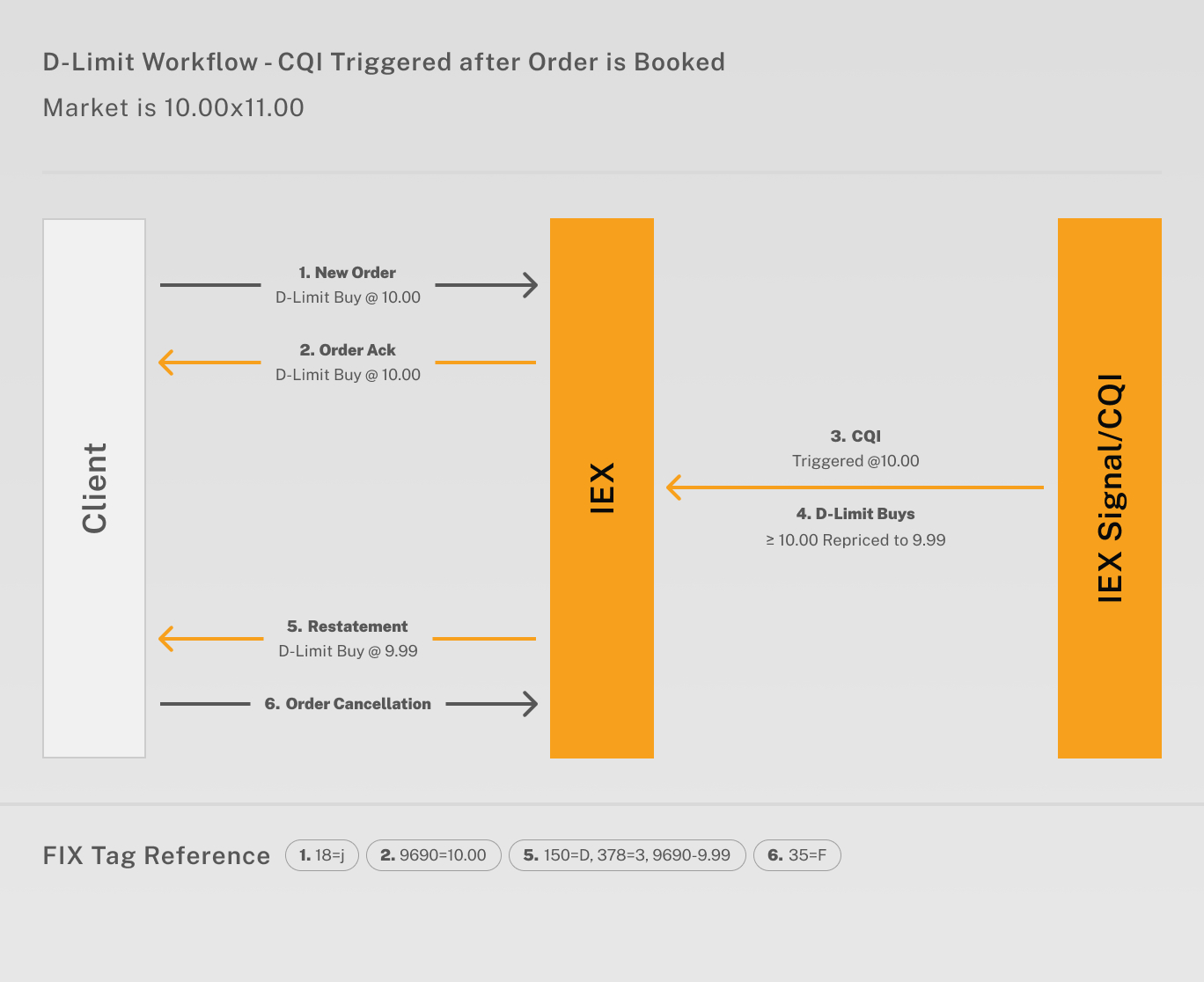Functionality
C-Peg uses the Signal functionality of D-Peg but is constrained to exercise discretion to the lesser of the last sale price or midpoint price during periods of quote stability and rests at the least aggressive (lowest) of 1 MPV below the NBB, the last sale, or the limit price.
When the Signal makes a determination that a quote is unstable, C-Peg orders stop seeking liquidity at a more aggressive price until the quote returns to a stable state.
Example Scenario

Quote is Stable. The Signal is “Off.”
C-Peg buy order is booked 1 MPV below the NBB (at $10.09) with $10.13 limit during a period of quote stability. The last sale was at $10.11.
- Example 1: ISO Sell order with a $10.09 limit crosses the spread; trade occurs at the resting price of $10.09 (lower than last sale of $10.11).
- Example 2: Sell limit order with a $10.11 limit; trade occurs at the discretionary price of $10.11 (equal to last sale).
- Example 3: Sell limit order with a $10.12 limit checks midpoint; no trade occurs as C-Peg is constrained by the last sale price of $10.11.

Quote is Crumbling. The Signal is “On.”
C-Peg buy order is booked 1 MPV below the NBB (at $10.09) with a $10.13 limit during a crumbling quote. The last sale was at $10.13.
- Example 1: Sell IOC order with a $10.12 limit checks the midpoint, and C-Peg order recognizes that quote is crumbling and does not execute discretion; no trade occurs.
- Example 2: D-Peg sell FOK order with a $10.12 limit checks the midpoint, and C-Peg order recognizes that quote is crumbling and does not execute discretion; no trade occurs.

Last Sale Price Constraint
C-Peg buy order is booked at the last sale price, $10.08, during a period of quote stability. The NBB is $10.10.
- Example 1: ISO sell order with a $10.08 limit crosses the spread; trade occurs at the resting price of $10.08 (equal to last sale).
- Example 2: Sell limit order with a $10.09 limit first interacts with any liquidity at the NBB on IEX Exchange and then with any resting D-Peg orders; C-Peg will not exercise discretion due to last sale price constraint.
Example Scenario

Quote is Stable. The Signal is “Off.”
C-Peg buy order is booked 1 MPV below the NBB (at $10.09) with $10.13 limit during a period of quote stability. The last sale was at $10.11.
- Example 1: ISO Sell order with a $10.09 limit crosses the spread; trade occurs at the resting price of $10.09 (lower than last sale of $10.11).
- Example 2: Sell limit order with a $10.11 limit; trade occurs at the discretionary price of $10.11 (equal to last sale).
- Example 3: Sell limit order with a $10.12 limit checks midpoint; no trade occurs as C-Peg is constrained by the last sale price of $10.11.

Quote is Crumbling. The Signal is “On.”
C-Peg buy order is booked 1 MPV below the NBB (at $10.09) with a $10.13 limit during a crumbling quote. The last sale was at $10.13.
- Example 1: Sell IOC order with a $10.12 limit checks the midpoint, and C-Peg order recognizes that quote is crumbling and does not execute discretion; no trade occurs.
- Example 2: D-Peg sell FOK order with a $10.12 limit checks the midpoint, and C-Peg order recognizes that quote is crumbling and does not execute discretion; no trade occurs.

Last Sale Price Constraint
C-Peg buy order is booked at the last sale price, $10.08, during a period of quote stability. The NBB is $10.10.
- Example 1: ISO sell order with a $10.08 limit crosses the spread; trade occurs at the resting price of $10.08 (equal to last sale).
- Example 2: Sell limit order with a $10.09 limit first interacts with any liquidity at the NBB on IEX Exchange and then with any resting D-Peg orders; C-Peg will not exercise discretion due to last sale price constraint.
Related Content
Contact Us
Questions about trading on IEX Exchange?
Reach out here or talk to your IEX contact.






